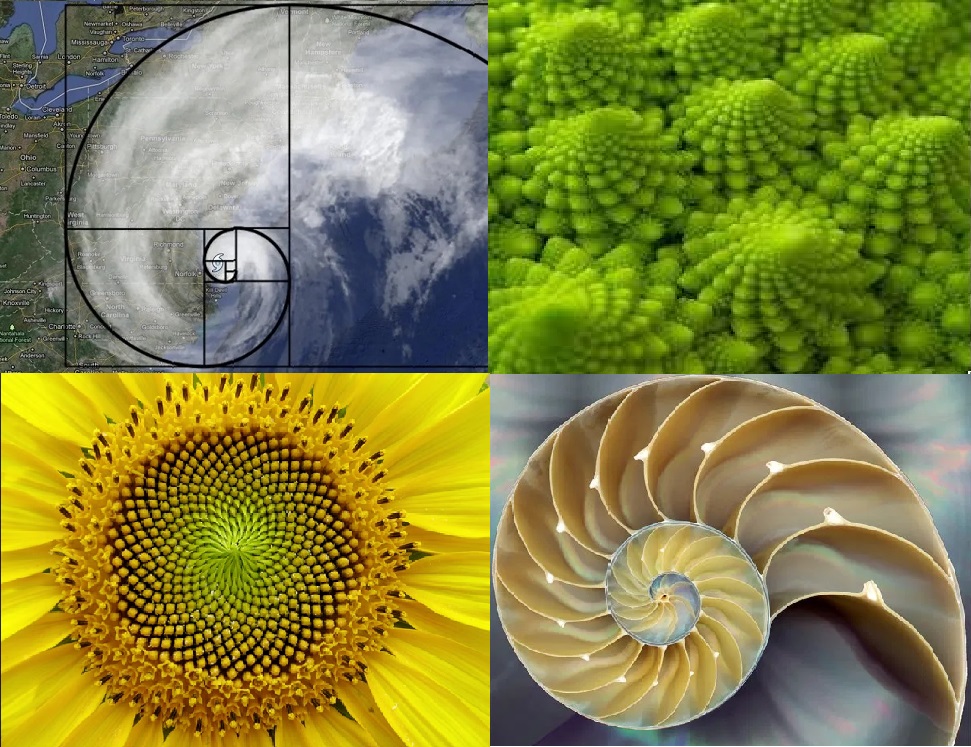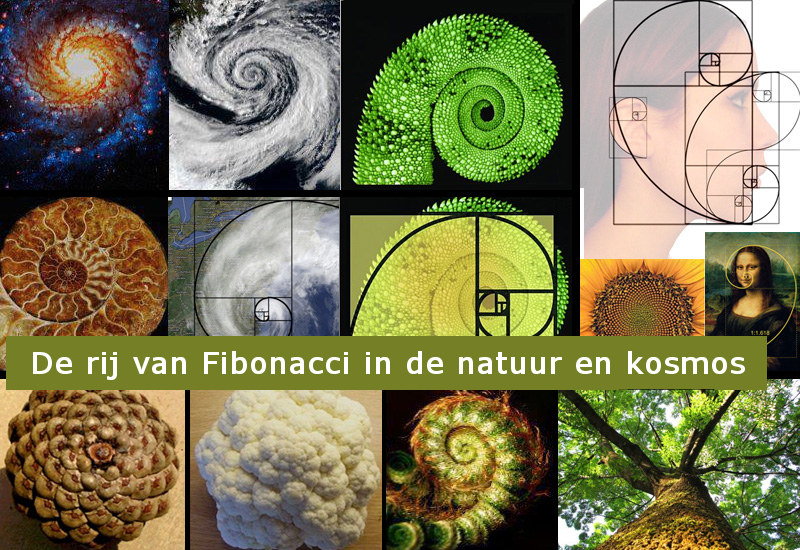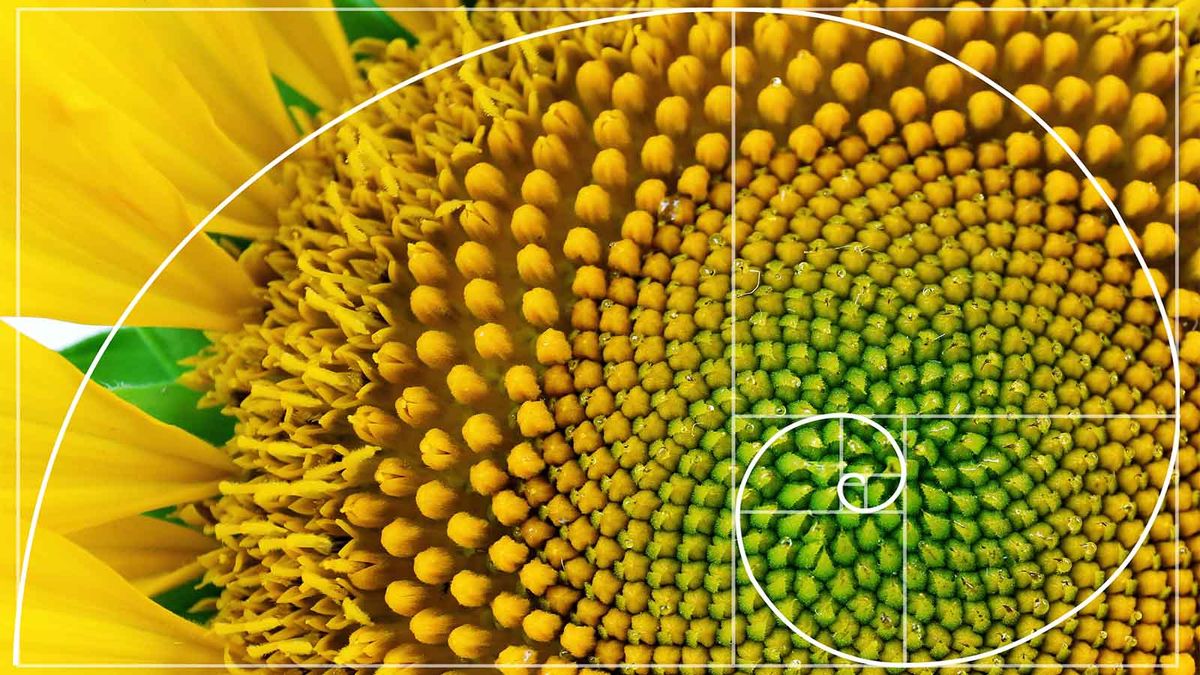
Found on Bing from Fibonacci Sequence Math, Fibonacci Spiral Art, Alex
Deze getallen reeks is een van de beroemdste in de Wiskunde. De Fibonacci-rij is wereldberoemd vanwege de vele magische eigenschappen die kunnen worden ontdekt door met de rij te experimenteren. De basiseigenschap is dat iedere term in de rij, de som is van de 2 termen er voor. Je begint met 1,1,.. dus de derde term is 1+1=2.

Fibonacci_Sunflower Geometria naturaleza, Fractales en la naturaleza, Fractales
The Fibonacci sequence of numbers forms the best whole number approximations to the Golden Proportion, which, some say, is most aesthetically beautiful to humans. "Empirical investigations of the aesthetic properties of the Golden Section date back to the very origins of scientific psychology itself, the first studies being conducted by Fechner in the 1860s" (Green 937).

Gulden Snede Math4All
De Fibonacci-reeks vormt de rekenkundige basis voor de gulden snede. Dit is in 1611 ontdekt door de beroemde astronoom Johannes Kepler. Als je een getal uit de Fibonacci-reeks deelt door zijn voorganger uit de reeks, dan benadert de breuk het gulden-snede-getal Φ.

Fibonacci spiral in nature. Arte, Geometría sagrada, Sagrado
In mathematics, the Fibonacci numbers form a sequence defined recursively by: = {= = + > That is, after two starting values, each number is the sum of the two preceding numbers. The Fibonacci sequence has been studied extensively and generalized in many ways, for example, by starting with other numbers than 0 and 1, by adding more than two numbers to generate the next number, or by adding.

Fibonacci's Golden Spiral The Relationship between Maths and Nature NaturPhilosophie
Fibonacci sequence, the sequence of numbers 1, 1, 2, 3, 5, 8, 13, 21,., each of which, after the second, is the sum of the two previous numbers; that is, the nth Fibonacci number F n = F n − 1 + F n − 2.The sequence was noted by the medieval Italian mathematician Fibonacci (Leonardo Pisano) in his Liber abaci (1202; "Book of the Abacus"), which also popularized Hindu-Arabic numerals.

De rij van Fibonacci
Geskiedenis Die Fibonacci-volgorde kry sy naam van 'n Italiaanse wiskundige wat in die Middeleeue gewoon het: Leonardo van Pisa, ook bekend as Fibonacci (1175-1250). Leonardo het sy kinderjare in Noord-Afrika deurgebring en deur die Middellandse See gereis, waar hy geleer het oor die Indo-Arabiese syferstelsel en daaroor verheug was.

Sunflowers fibonacci spirals ThingLink Espiral de fibonacci, Numero aureo, Patrones matematicos
Are there real-life examples? The Fibonacci sequence is a series of numbers in which each number is the sum of the two that precede it. Starting at 0 and 1, the first 10 numbers of the sequence.

The fabulous Fibonacci sequence in nature Science Vibe
2 min. lezen Wiskunde en natuur komen samen als we tussen al het groen speuren naar de Rij van Fibonacci en die nog vinden ook! In zijn boek 'Liber Abaci' presenteerde

Sezione aurea e sequenza di Fibonacci la bellezza é soggettiva?
The Fibonacci defines how the density of branches increases up a tree trunk, the arrangement of leaves on a stem, and how a pine cone's scales are arranged. Yet you will not see the Fibonacci everywhere, as nature has many different methods and shades of survival. Hang Fibonacci In Your Home

Fibonacci Sequence The Golden Ratio Beautiful macro photography, Spirals in nature, Patterns
Fibonacci (/ ˌ f ɪ b ə ˈ n ɑː tʃ i /; also US: / ˌ f iː b-/, Italian: [fiboˈnattʃi]; c. 1170 - c. 1240-50), also known as Leonardo Bonacci, Leonardo of Pisa, or Leonardo Bigollo Pisano ('Leonardo the Traveller from Pisa'), was an Italian mathematician from the Republic of Pisa, considered to be "the most talented Western mathematician of the Middle Ages".

Image result for fibonacci and flowers Nombre d'or, Spirale de fibonacci, Solide de platon
Fibonacci and the original problem about rabbits where the series first appears, the family trees of cows and bees, the golden ratio and the Fibonacci series, the Fibonacci Spiral and sea shell shapes, branching plants, flower petal and seeds, leaves and petal arrangements, on pineapples and in apples, pine cones and leaf arrangements.

Why Does the Fibonacci Sequence Appear So Often in Nature? usanewsology.in
Xn+2 = Xn+1 + Xn. Basically, each integer is the sum of the preceding two numbers. (You can apply the concept to negative integers, but we're only going to cover the positive integers here.) To find 2, add the two numbers before it (1+1) To get 3, add the two numbers before it (1+2) This set of infinite sums is known as the Fibonacci series or.

The Fibonacci Sequence in Nature • Insteading
De rij van Fibonacci wordt al genoemd in de Chhandah-shāstra, Kunst van het metrum, van de Sanskriet schrijver Pingala, omstreeks 450 v. Chr. of volgens andere datering omstreeks 200 v. Chr., [2] onder de naam maatraameru, Berg van de cadens.

Fibonacci Sequence
Een wiskundig meesterwerk: De Fibonacci-reeks. De rij van Fibonacci (de gulden snede), is een perfect voorbeeld van de relatie tussen wiskunde en kunst in zowel natuurlijke als door de mens ontwikkelde fenomenen. Iedereen kent het spreekwoord 'de gulden middenweg kiezen', en ook de voormalige Nederlandse munteenheid de gulden is natuurlijk.

Fibonacci in Nature The Gartley pattern was outlined by H.M. Gartley in his book Profits
Als je goed oplet, zie je dat de natuur veel ordelijker, systematischer en methodischer is ingedeeld dan het op het eerste gezicht lijkt. Als je De Da Vinci Code gelezen of gezien hebt, ken je vast wel de Fibonacci-reeks. Dat is een reeks van getallen waarbij de som van de twee voorgaande getallen gelijk is aan het eerstvolgende cijfer: 1 1 2 3.

7 Beautiful Examples Of The Fibonacci Sequence In Nature
71 Share 6.1K views 3 years ago GENT Wiskunde is niet enkel logisch, maar kan ook mooi zijn! De reeks of rij van Fibonacci is hier het perfecte bewijs voor! Overal in de natuur komen we.